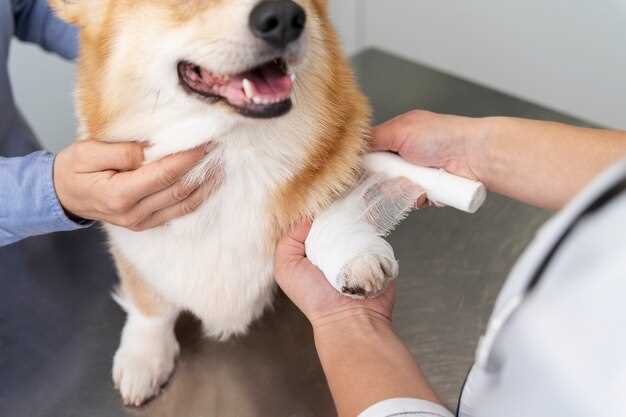
If your furry friend is suffering from a urinary tract infection, Metronidazole may be the solution you need. This powerful antibiotic is often prescribed by veterinarians to treat various bacterial infections in dogs, including UTIs. Metronidazole works by killing the bacteria causing the infection, helping your dog feel better quickly. Consult your vet to see if Metronidazole is the right choice for your pet’s UTI.
Understanding Dog Urinary Tract Infections

Dog urinary tract infections (UTIs) are common bacterial infections that affect the urinary system of dogs. These infections can occur in the bladder, urethra, or kidneys and can cause discomfort and pain for your furry friend.
There are several factors that can contribute to the development of UTIs in dogs, including bacterial contamination, weakened immune system, anatomical abnormalities, and underlying health conditions. It’s important to recognize the signs and symptoms of UTIs in dogs, which may include frequent urination, straining to urinate, blood in the urine, and discomfort while urinating.
If left untreated, UTIs can lead to more serious health problems and complications. It’s crucial to consult with your veterinarian if you suspect that your dog may have a UTI, as they can provide a proper diagnosis and recommend the appropriate treatment options.
- Common causes of UTIs in dogs include:
- Bacterial contamination
- Weak immune system
- Anatomical abnormalities
- Underlying health conditions
Understanding the causes and symptoms of UTIs in dogs can help you take the necessary steps to prevent these infections and keep your furry companion healthy and happy.
Metronidazole: Treatment Options
Metronidazole is a commonly prescribed antibiotic for treating bacterial infections in dogs, including urinary tract infections (UTIs). It is effective against a wide range of bacteria and works by interfering with the DNA synthesis of the bacteria, ultimately leading to their death.
When it comes to treating UTIs in dogs, metronidazole is often prescribed in conjunction with other antibiotics to ensure comprehensive coverage of the infection. The dosage and duration of treatment will vary depending on the severity of the infection, the size of the dog, and other factors determined by the veterinarian.
Administering Metronidazole to Dogs
- Metronidazole is typically available in tablet form, but can also be given as an oral suspension.
- It is important to follow the veterinarian’s instructions regarding dosage and frequency of administration.
- Administer the medication with food to help reduce the chances of gastrointestinal upset.
Metronidazole: Treatment Options
Metronidazole is a common antibiotic used to treat urinary tract infections in dogs. It is effective against a variety of bacteria and is often prescribed by veterinarians for UTI treatment.
Types of Metronidazole
Metronidazole comes in different forms, including tablets, capsules, and liquid suspension. The dosage and duration of treatment will depend on the severity of the UTI and the weight of the dog. It is essential to follow the veterinarian’s instructions carefully when administering metronidazole to ensure the best results.
Administration
Metronidazole is typically given orally, either with food or on an empty stomach, as directed by the veterinarian. It is crucial to complete the full course of treatment, even if the dog’s symptoms improve before the medication is finished. Skipping doses or stopping treatment early can lead to the infection persisting or recurring.
Important note: Always consult with a veterinarian before giving any medication to your dog, including metronidazole. They will provide the proper dosage and guidance based on your dog’s specific condition.
Administering Metronidazole to Dogs

When administering Metronidazole to dogs, it is essential to follow the prescribed dosage and schedule provided by your veterinarian. This medication is typically given orally in tablet form, although a liquid suspension may also be available. It is important to ensure that your dog consumes the entire dose, so consider hiding the pill in a treat or mixing the liquid suspension with their food to make it more palatable.
It is crucial to give Metronidazole on an empty stomach, at least one hour before or two hours after feeding, to maximize its effectiveness. Always consult with your vet if you have any questions or concerns about the administration of this medication. Do not discontinue the treatment prematurely, even if your dog’s symptoms improve, as this could lead to a relapse of the infection.
Potential Side Effects and Risks
While metronidazole is generally safe for dogs when used correctly, it can cause some side effects in some cases. Common side effects may include nausea, vomiting, diarrhea, and loss of appetite. If your dog experiences any of these side effects, consult your veterinarian immediately.
It’s important to follow your veterinarian’s instructions carefully when administering metronidazole to your dog to minimize the risk of side effects. Always provide the correct dosage and complete the full course of treatment as prescribed.
Potential Risks
In some rare cases, metronidazole can cause more serious side effects such as neurological issues, liver problems, or allergic reactions. If your dog shows any signs of these serious side effects, stop the medication immediately and seek veterinary care.
Preventing UTIs in Dogs
Urinary Tract Infections (UTIs) can be prevented in dogs with some simple measures:
- Ensure your dog has access to fresh, clean water at all times.
- Take your dog out for frequent bathroom breaks to prevent urine from sitting in the bladder for too long.
- Maintain good hygiene by cleaning your dog’s genital area regularly.
- Encourage your dog to urinate after exercise to help flush out bacteria.
- Avoid feeding your dog low-quality or contaminated food that could contribute to UTIs.
- Consult your veterinarian about the appropriate diet and supplements to promote urinary health.
